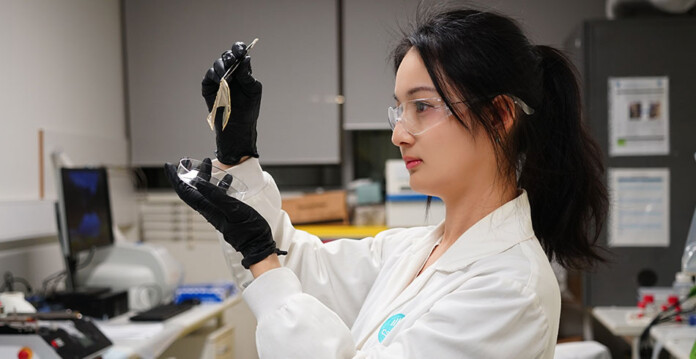Australian engineers have developed a liquid battery that could help households store rooftop solar energy more safely, cheaply and efficiently than ever before.
Their next-generation flow battery opens the door to compact, high-performance battery systems for homes, and is expected to be much cheaper than current $10,000 lithium-ion systems.
Flow batteries store energy in liquids rather than solid materials like those found in lithium-ion batteries, making them cheaper to manufacture, safer to operate and easier to scale. These batteries have been around for decades but have traditionally been used in large-scale energy storage due to their large size and slow charge speeds.
Related article: New water batteries could rival fire-prone Lithium-ion
Wanqiao Liang, the study’s first author and a Monash University PhD candidate at the Department of Materials Science and Engineering, said the team’s new membrane design fixes the speed problem making it ideal for households and a promising key player in the energy transition market.
“We’ve taken a safe, affordable chemistry and made it fast enough to capture rooftop solar in real time,” Liang said.
“We’ve engineered a membrane that finally makes organic flow batteries competitive for residential and mid-scale storage. It opens the door to systems that are not only cheaper, but also safer and simpler to scale.”
While some companies already produce flow batteries, Monash’s design stands out for its combination of safety, low cost and high-speed performance—a balance few systems around the world have achieved.
“The key was improving ion selectivity; letting the good ions through quickly while keeping unwanted ones out. Our new membrane achieves this balance, allowing fast, stable operation even at high current densities,” Liang said.
“We outperformed the industry-standard Nafion membrane in both speed and stability – running 600 high-current cycles with virtually no capacity loss—that’s a major leap forward for this kind of battery.”
Wanqiao said a careful balance was crucial to making these batteries work for rooftop solar at home.
Related article: “Giant leap”: UQ researchers set new solar cell world record
“This is the kind of battery you’d want in your garage,” Liang said.
“It’s non-toxic, non-flammable, and made from abundant materials, all while keeping up with solar power on a sunny day.”
The team is now 3D printing prototype systems and testing them under real-world conditions.







